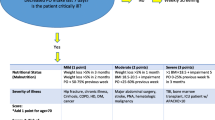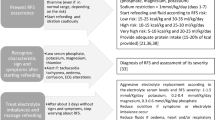Abstract
Purpose
Animal milk fat globule-EGF factor 8 (MFG-E8) has been shown to be beneficial in attenuating the inflammatory response in sepsis. In this study, we examined the effect of recombinant human MFG-E8 (rhMFG-E8) in an animal model of sepsis in an effort to develop it as a potential therapy against sepsis in humans.
Methods
Rats were subjected to sepsis by cecal ligation and puncture (CLP), and at 5 h post-CLP, they were given different doses of rhMFG-E8 (20, 40, 80, 160 μg/kg BW) in normal saline. At 20 h post-CLP, samples were collected for further analysis. A 10-day survival study was also performed.
Results
At 20 h after CLP, organ injury indicators, serum IL-6 and TNF-α, and plasma HMGB-1 levels were significantly increased as compared to sham-operated animals. Treatment with 20 μg/kg rhMFG-E8 significantly reduced these levels. With higher doses, further reductions in AST and ALT (59–62%), creatinine (65–68%), and lactate (46–57%), and serum IL-6 and TNF-α were obtained. The 160 μg/kg dose produced the greatest reduction in serum TNF-α. With treatment with 20 μg/kg rhMFG-E8, HMGB-1 levels decreased by 80%, returning back to sham values. In a 10-day survival study, vehicle-treated animals produced a 36% survival rate, while rhMFG-E8 significantly improved the survival rate to 68–72%. Treatment with increasing doses of rhMFG-E8 significantly reduced the number of apoptotic cells detected and markedly attenuated the tissue damages observed in the lungs.
Conclusions
These data suggest that recombinant human MFG-E8 is beneficial in ameliorating sepsis in an animal model of sepsis.




Similar content being viewed by others
References
Levy MM, Dellinger RP, Townsend SR, Linde-Zwirble WT, Marshall JC, Bion J, Schorr C, Artigas A, Ramsay G, Beale R, Parker MM, Gerlach H, Reinhart K, Silva E, Harvey M, Regan S, Angus DC (2010) The Surviving Sepsis Campaign: results of an international guideline-based performance improvement program targeting severe sepsis. Crit Care Med 38:367–374
Dombrovskiy VY, Martin AA, Sunderram J, Paz HL (2007) Rapid increase in hospitalization and mortality rates for severe sepsis in the United States: a trend analysis from 1993 to 2003. Crit Care Med 35:1244–1250
Angus DC, Linde-Zwirble WT, Lidicker J, Clermont G, Carcillo J, Pinsky MR (2001) Epidemiology of severe sepsis in the United States: analysis of incidence, outcome, and associated costs of care. Crit Care Med 29:1303–1310
Sprung CL, Zimmerman JL, Christian MD, Joynt GM, Hick JL, Taylor B, Richards GA, Sandrock C, Cohen R, Adini B (2010) Recommendations for intensive care unit and hospital preparations for an influenza epidemic or mass disaster: summary report of the European Society of Intensive Care Medicine’s Task Force for intensive care unit triage during an influenza epidemic or mass disaster. Intensive Care Med 36:428–443
Briegel J, Sprung CL, Annane D, Singer M, Keh D, Moreno R, Mohnle P, Weiss Y, Avidan A, Brunkhorst FM, Fiedler F, Vogeser M (2009) Multicenter comparison of cortisol as measured by different methods in samples of patients with septic shock. Intensive Care Med 35:2151–2156
Bernard GR, Macias WL, Joyce DE, Williams MD, Bailey J, Vincent JL (2003) Safety assessment of drotrecogin alfa (activated) in the treatment of adult patients with severe sepsis. Crit Care 7:155–163
Bernard GR, Vincent JL, Laterre PF, LaRosa SP, Dhainaut JF, Lopez-Rodriguez A, Steingrub JS, Garber GE, Helterbrand JD, Ely EW, Fisher CJ Jr (2001) Efficacy and safety of recombinant human activated protein C for severe sepsis. N Engl J Med 344:699–709
Stubbs JD, Lekutis C, Singer KL, Bui A, Yuzuki D, Srinivasan U, Parry G (1990) cDNA cloning of a mouse mammary epithelial cell surface protein reveals the existence of epidermal growth factor-like domains linked to factor VIII-like sequences. Proc Natl Acad Sci USA 87:8417–8421
Miyasaka K, Hanayama R, Tanaka M, Nagata S (2004) Expression of milk fat globule epidermal growth factor 8 in immature dendritic cells for engulfment of apoptotic cells. Eur J Immunol 34:1414–1422
Hanayama R, Tanaka M, Miwa K, Shinohara A, Iwamatsu A, Nagata S (2002) Identification of a factor that links apoptotic cells to phagocytes. Nature 417:182–187
Lotze MT, Tracey KJ (2005) High-mobility group box 1 protein (HMGB1): nuclear weapon in the immune arsenal. Nat Rev Immunol 5:331–342
Huber-Lang MS, Younkin EM, Sarma JV, McGuire SR, Lu KT, Guo RF, Padgaonkar VA, Curnutte JT, Erickson R, Ward PA (2002) Complement-induced impairment of innate immunity during sepsis. J Immunol 169:3223–3231
Kaufmann I, Hoelzl A, Schliephake F, Hummel T, Chouker A, Peter K, Thiel M (2006) Polymorphonuclear leukocyte dysfunction syndrome in patients with increasing sepsis severity. Shock 26:254–261
Fink SL, Cookson BT (2005) Apoptosis, pyroptosis, and necrosis: mechanistic description of dead and dying eukaryotic cells. Infect Immun 73:1907–1916
Komura H, Miksa M, Wu R, Goyert SM, Wang P (2009) Milk fat globule epidermal growth factor–factor VIII is down-regulated in sepsis via the lipopolysaccharide-CD14 pathway. J Immunol 182:581–587
Miksa M, Wu R, Dong W, Das P, Yang D, Wang P (2006) Dendritic cell-derived exosomes containing milk fat globule epidermal growth factor–factor VIII attenuate proinflammatory responses in sepsis. Shock 25:586–593
Miksa M, Wu R, Dong W, Komura H, Amin D, Ji Y, Wang Z, Wang H, Ravikumar TS, Tracey KJ, Wang P (2009) Immature dendritic cell-derived exosomes rescue septic animals via milk fat globule epidermal growth factor VIII. J Immunol 183:5983–5990
Andersson U, Tracey KJ (2003) HMGB1 in sepsis. Scand J Infect Dis 35:577–584
Moretta A (2002) Natural killer cells and dendritic cells: rendezvous in abused tissues. Nat Rev Immunol 2:957–964
Martin GS, Mannino DM, Eaton S, Moss M (2003) The epidemiology of sepsis in the United States from 1979 through 2000. N Engl J Med 348:1546–1554
Weber P, Wang P, Maddens S, Wang P, Wu R, Miksa M, Dong W, Mortimore M, Golec JM, Charlton P (2009) VX-166: a novel potent small molecule caspase inhibitor as a potential therapy for sepsis. Crit Care 13:R146
Lauber K, Blumenthal SG, Waibel M, Wesselborg S (2004) Clearance of apoptotic cells: getting rid of the corpses. Mol Cell 14:277–287
Hanayama R, Tanaka M, Miyasaka K, Aozasa K, Koike M, Uchiyama Y, Nagata S (2004) Autoimmune disease and impaired uptake of apoptotic cells in MFG-E8-deficient mice. Science 304:1147–1150
Larocca D, Peterson JA, Urrea R, Kuniyoshi J, Bistrain AM, Ceriani RL (1991) A Mr 46, 000 human milk fat globule protein that is highly expressed in human breast tumors contains factor VIII-like domains. Cancer Res 51:4994–4998
Oshima K, Aoki N, Negi M, Kishi M, Kitajima K, Matsuda T (1999) Lactation-dependent expression of an mRNA splice variant with an exon for a multiply O-glycosylated domain of mouse milk fat globule glycoprotein MFG-E8. Biochem Biophys Res Commun 254:522–528
Yamaguchi H, Takagi J, Miyamae T, Yokota S, Fujimoto T, Nakamura S, Ohshima S, Naka T, Nagata S (2008) Milk fat globule EGF factor 8 in the serum of human patients of systemic lupus erythematosus. J Leukoc Biol 83:1300–1307
Hu CY, Wu CS, Tsai HF, Chang SK, Tsai WI, Hsu PN (2009) Genetic polymorphism in milk fat globule-EGF factor 8 (MFG-E8) is associated with systemic lupus erythematosus in human. Lupus 18:676–681
Miksa M, Amin D, Wu R, Jacob A, Zhou M, Dong W, Yang WL, Ravikumar TS, Wang P (2008) Maturation-induced down-regulation of MFG-E8 impairs apoptotic cell clearance and enhances endotoxin response. Int J Mol Med 22:743–748
Miksa M, Amin D, Wu R, Ravikumar TS, Wang P (2007) Fractalkine-induced MFG-E8 leads to enhanced apoptotic cell clearance by macrophages. Mol Med 13:553–560
Song G, Ouyang G, Bao S (2005) The activation of Akt/PKB signaling pathway and cell survival. J Cell Mol Med 9:59–71
Wu CH, Liu JY, Wu JP, Hsieh YH, Liu CJ, Hwang JM, Lee SD, Chen LM, Chang MH, Kuo WW, Shyu JC, Tsai JH, Huang CY (2005) 17beta-estradiol reduces cardiac hypertrophy mediated through the up-regulation of PI3 K/Akt and the suppression of calcineurin/NF-AT3 signaling pathways in rats. Life Sci 78:347–356
Jinushi M, Nakazaki Y, Carrasco DR, Draganov D, Souders N, Johnson M, Mihm MC, Dranoff G (2008) Milk fat globule EGF-8 promotes melanoma progression through coordinated Akt and twist signaling in the tumor microenvironment. Cancer Res 68:8889–8898
Aziz MM, Ishihara S, Mishima Y, Oshima N, Moriyama I, Yuki T, Kadowaki Y, Rumi MA, Amano Y, Kinoshita Y (2009) MFG-E8 attenuates intestinal inflammation in murine experimental colitis by modulating osteopontin-dependent alphavbeta3 integrin signaling. J Immunol 182:7222–7232
Cui T, Miksa M, Wu R, Komura H, Zhou M, Dong W, Wang Z, Higuchi S, Chaung W, Blau SA, Marini CP, Ravikumar TS, Wang P (2010) Milk fat globule epidermal growth factor 8 attenuates acute lung injury in mice after intestinal ischemia and reperfusion. Am J Respir Crit Care Med 181:238–246
Wu R, Chaung WW, Zhou M, Ji Y, Dong W, Wang Z, Qiang X, Wang P (2010) Milk fat globule EGF factor 8 attenuates sepsis-induced apoptosis and organ injury in alcohol-intoxicated rats. Alcohol Clin Exp Res 34:1625–1633
Dellinger RP, Carlet JM, Masur H, Gerlach H, Calandra T, Cohen J, Gea-Banacloche J, Keh D, Marshall JC, Parker MM, Ramsay G, Zimmerman JL, Vincent JL, Levy MM (2004) Surviving Sepsis Campaign guidelines for management of severe sepsis and septic shock. Intensive Care Med 30:536–555
Acknowledgments
This study was supported by the National Institutes of Health (NIH) grants, R01GM057468 and R01GM053008 (P.W.).
Author information
Authors and Affiliations
Corresponding author
Additional information
One of the authors (P. Wang) is an inventor of the pending PCT application no. WO/2006/122327: “Milk fat globule epidermal growth factor-factor VIII and sepsis” and PCT application no. WO/2009/064448: “Prevention and treatment of inflammation and organ injury after ischemia/reperfusion using MFG-E8.” These patent applications cover the fundamental concept of using MFG-E8 for the treatment of sepsis and ischemia/reperfusion injury. The other authors report no financial conflicts of interest.
Electronic supplementary material
Below is the link to the electronic supplementary material.
Rights and permissions
About this article
Cite this article
Shah, K.G., Wu, R., Jacob, A. et al. Recombinant human milk fat globule-EGF factor 8 produces dose-dependent benefits in sepsis. Intensive Care Med 38, 128–136 (2012). https://doi.org/10.1007/s00134-011-2353-7
Received:
Accepted:
Published:
Issue Date:
DOI: https://doi.org/10.1007/s00134-011-2353-7




